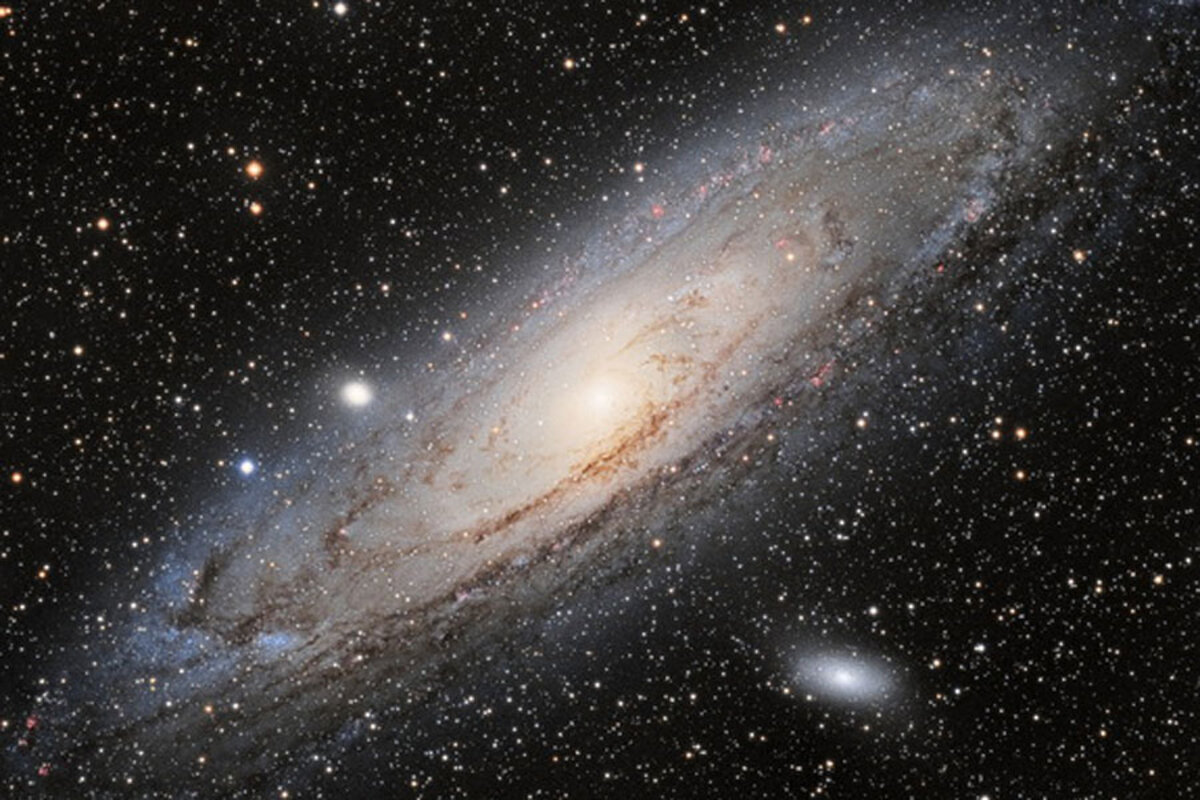Did a European spacecraft detect dark matter?
Loading...
Astronomers may finally have detected a signal of dark matter, the mysterious and elusive stuff thought to make up most of the material universe.
While poring over data collected by the European Space Agency's XMM-Newton spacecraft, a team of researchers spotted an coming from two different celestial objects — the Andromeda galaxy and the Perseus galaxy cluster.
The signal corresponds to no known particle or atom and thus may have been produced by dark matter, researchers said. []
"The signal's distribution within the galaxy corresponds exactly to what we were expecting with — that is, concentrated and intense in the center of objects and weaker and diffuse on the edges," study co-author Oleg Ruchayskiy, of the École Polytechnique Fédérale de Lausanne (EPFL) in Switzerland, said in a statement.
"With the goal of verifying our findings, we then looked at data from our own galaxy, the , and made the same observations," added lead author Alexey Boyarsky, of EPFL and Leiden University in the Netherlands.
Dark matter is so named because it neither absorbs nor emits light and therefore cannot be directly observed. But astronomers know dark matter exists because it interacts gravitationally with the "normal" matter we can see and touch.
And there is apparently a lot of dark matter out there: Observations of star motion and galaxy dynamics suggest that about 80 percent of all matter in the universe is "dark," exerting a gravitational force but not interacting with light.
Researchers have proposed a number of different exotic particles as the constituents of dark matter, including weakly interacting massive particles (WIMPs), axions and sterile neutrinos, hypothetical cousins of "ordinary" neutrinos (confirmed particles that resemble electrons but lack an electrical charge).
The decay of sterile neutrinos is thought to produce X-rays, so the research team suspects these may be the dark matter particles responsible for the mysterious signal coming from Andromeda and the Perseus cluster.
If the results — which will be published next week in the journal Physical Review Letters — hold up, they could usher in a new era in astronomy, study team members said.
"Confirmation of this discovery may lead to construction of new telescopes specially designed for studying the signals from dark matter particles," Boyarsky said. "We will know where to look in order to trace dark structures in space and will be able to reconstruct how the universe has formed."
You can read the paper at the online preprint site arXiv:
Follow Mike Wall on Twitter �����Ի���. Follow us ,�����ǰ�. Originally published on .
Copyright 2014 , a TechMediaNetwork company. All rights reserved. This material may not be published, broadcast, rewritten or redistributed.




